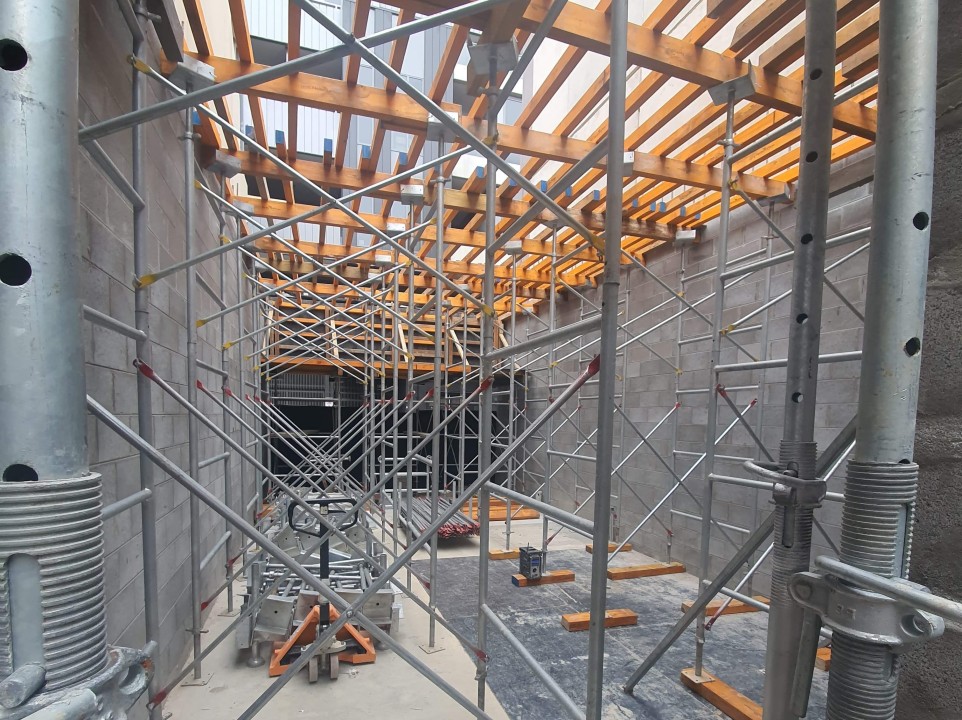Nov . 24, 2024 20:26 Back to list
falsework
Understanding Falsework The Backbone of Temporary Structures in Construction
In the world of construction, the term falsework may not be well-known to the general public, yet it plays a pivotal role in the integrity and success of many building projects. Falsework refers to the temporary structures used to support a building, bridge, or other construction elements while they are being built. This essential aspect of construction ensures that the main structure can be erected safely and efficiently.
Falsework serves several critical functions during the construction process. Primarily, it provides support for concrete elements until they have cured and gained sufficient strength to bear their own weight. This is crucial in projects involving large spans, elevated platforms, or intricate designs where stability is temporarily needed before the permanent elements are installed. By employing falsework, builders can effectively shape the construction process, allowing them to maintain a steady workflow and adhere to project timelines.
Another significant advantage of falsework is its ability to ensure worker safety. High construction sites present unique hazards, and the presence of sturdy, reliable temporary support systems helps mitigate the risks associated with working at heights. Workers can move about the site with more confidence, knowing that the structures they rely on are stable—crucial for minimizing accidents during the construction phase.
In terms of design and engineering, falsework can be remarkably versatile
. It can take various forms, including shoring, scaffolding, and centering. Shoring is typically used to support a load-bearing wall or structure from below, while scaffolding provides a platform for workers to access higher areas. Centering is often employed in arch constructions, giving the shape of the arch its necessary form until the masonry is complete. Each type of falsework can be tailored to suit the specific requirements of a project, demonstrating both the flexibility and adaptability of these temporary structures.falsework

The choice of materials used in falsework is critical. Common materials include timber, steel, and aluminum, each offering distinct qualities. Timber is often favored for smaller projects due to its availability and ease of use, while steel is preferred for larger or more complex structures, as its strength provides the support needed for significant loads. Aluminum, being lightweight yet strong, is also becoming increasingly popular, especially in scenarios where mobility and ease of assembly are paramount.
However, while falsework is instrumental to construction, it is not without its challenges. Proper design and engineering are crucial to prevent collapses that can lead to disastrous outcomes. Builders must consider various factors, including load distribution, environmental conditions, and potential stresses, during the design phase. Rigorous inspections and quality control measures must also be enacted to ensure that the falsework functions as intended throughout the construction process.
In recent years, advancements in technology have further enhanced the use of falsework. Innovations such as modular falsework systems, which allow for quick assembly and disassembly, are becoming increasingly popular. These modular systems not only reduce labor costs and time but also promote sustainability in construction practices by minimizing waste.
In conclusion, falsework may remain in the shadows of the construction world, but its importance cannot be overstated. As the unsung hero supporting the creation of infrastructure, buildings, and bridges, it ensures safety, functionality, and efficiency during the construction phase. With modern technological advancements and a continued focus on safety and structural integrity, the role of falsework will undoubtedly grow in significance, shaping the future of construction projects worldwide. As we move forward, it is essential to recognize and appreciate the intricate systems that allow us to build vertically, paving the way for the architectural marvels of tomorrow.
-
High-Quality U Head Jack Scaffolding – Reliable Scaffolding Jack Head Manufacturer & Factory
NewsJul.08,2025
-
High-Quality I Beam H20 Leading Timber Beam H20 Material Factory, Exporters & Manufacturers
NewsJul.08,2025
-
High-Quality Powder Coating Steel Formwork - Durable & Corrosion Resistant Solutions
NewsJul.07,2025
-
Inclined Column Formwork Supplier – Durable & Precise Solutions for Unique Structures
NewsJul.07,2025
-
High-Quality Water Stop Solutions Trusted Water Stop Company & Suppliers
NewsJul.07,2025
-
High-Quality Formwork Material Supplier Reliable Manufacturer & Factory Solutions
NewsJul.06,2025